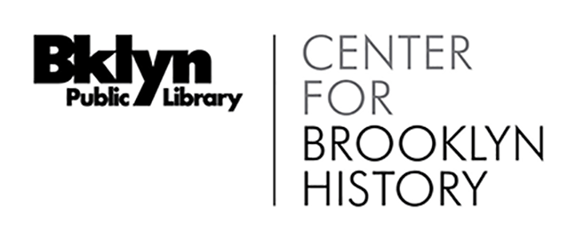Brooklyn Sheet Music Collection
Call Number
Date
Creator
Extent
Language of Materials
Abstract
The Brooklyn Sheet Music Collection consists of sheet music, primarily for voice and piano, all celebrating or emanating from the borough of Brooklyn. Contents include marches written in honor of a local person or business, pieces celebrating the whole or a part of the borough, songs from shows and movies set in or about Brooklyn, and pieces from Brooklyn's early 20th-century Yiddish-language theater.
Historical Note
With the oldest piece dating from 1869 and the latest from 1987, the music in the collection spans over a century of social change, from the age of parlor music to rock and hip-hop. Many of the earlier ones, which were written during the days of brass band concerts at the beach, recall a time when pianos and the skills to play them were more common in homes than they are today. These marches, waltzes and polkas are neither profound nor artistically impressive; however, they speak of a powerful connection to the borough that expressed itself in music and found enough popularity to be disseminated in published form. Sheet music, unlike many other published works, can be produced rapidly, allowing for rapid response to events or public interest. The earlier pieces, especially, offer a valuable perspective on local events and public attitudes.
Quite a few of the pieces date from the Tin Pan Alley period of popular music in the late nineteenth and early twentieth centuries, and were published by some of the most successful publishers in New York's Tin Pan Alley, such as T. B. Harms, Willis Woodward, M. Witmark, Harry Von Tilzer, and Leo Feist. As the twentieth century progressed, Brooklyn began to appear in movies and musicals written by the many talented musicians and lyricists who grew up here. Pieces about Brooklyn's Coney Island and other shore communities that had been associated so strongly with leisure and play gave way to celebrations of grittier neighborhoods where romance could bloom amid the cares of the workaday world. Immigrant groups—Italian, Irish, Jewish—started making their mark on the cultural landscape, both as originators and subjects of a vital musical tradition (as in the Yiddish theater) or as objects of parody in vaudeville songs.
The sheet music covers provide a unique window into how Brooklynites and their borough were portrayed: serious, sassy, silly, sensual, eager, elegant, romantic, and naïf. All of this is expressed in the graphics and illustrations confined within the borders of the title page. Usually in black and white, or two- to three colors at most, many show the date and publisher of the piece. Many covers, particularly for the Yiddish theater pieces, include portraits of performers well-known in their day. More than half of the pieces include advertisements on the back and inside covers, for pianos, music stores, music instruction, local merchants and newspapers, and other sheet music. These covers and advertisements bear succinct witness to cultural changes that took place during the twentieth century
Arrangement
Items in the collection are arranged chronologically.
Scope and Contents
The Brooklyn Sheet Music Collection consists of sheet music all celebrating or emanating from the borough of Brooklyn. The music is written for piano, with vocal parts for those songs that have lyrics. A number of the pieces also include guitar or ukulele chord symbols and diagrams, and one piece, Veni Creator Spiritus, is written for the organ. Contents fall into four major categories:
-Pieces, often in march form, written in honor of a person, organization or business, such as Drake's Cake Walk (for a bakery); the Brooklyn Daily Eagle Bridge Crush March (for Brooklyn's daily newspaper); the St. George March (for the St. George Hotel); The Noble Commander (for the Commander in Chief of a Masonic Temple); the Second Battalion March (for the Officers and Seamen of the 2nd Naval Battalion of Brooklyn NY); Hurrah for Bushwick High; and Martin's Silver Dress Parade (for Martin's Department Store on Fulton Street).
-Pieces celebrating a part or the whole of the borough, such as Brooklyn Life Waltzes (Dedicated to the Belles of Brooklyn); Down at Steeplechase Park; On a Sunday at Coney Island; Manhattan Beach March; Brooklyn Polka; My Brooklyn (Tribute to the Great Borough); Bergen Beach Schottisch; Give Me The Moon Over Brooklyn; Mariutch Down at Coney Isle (Make-a-the Hootch-a Ma Kootch).
-Pieces from shows and movies that are set in Brooklyn or use the borough as a plot element, such as: Born and Bred in Brooklyn (from The Rise of Rosie O'Reilly); My Baby Said Yes (Yip Yip de Hootie) (from The Blonde from Brooklyn); She's a Bombshell from Brooklyn (and not from Brazil) (from Stage Door Canteen); I Love an Old-Fashioned Song (from The Kid from Brooklyn); and Time after Time (from It Happened in Brooklyn).
-Pieces from Brooklyn's once-active Yiddish-language theater that include items such as Di Geist Dain Weg! Ich Geh Main Weg from Little Rabbi; In Shtrom fun Leben, Vy Ich Zol Nit Zein Vel Ich Dich Leibn from Who is Guilty?; and Bist Main Kroin from Yosel der Klezmer. (These materials represent a particularly scarce relic of early 20th-century Jewish communities in our borough.)
Subjects
Conditions Governing Access
While many items at the Center for Brooklyn History are unrestricted, we do not own reproduction rights to all materials. Be aware of the several kinds of rights that might apply: copyright, licensing and trademarks. The borrower assumes all responsibility for copyright questions.
Conditions Governing Use
Open to researchers without restriction.
Preferred Citation
Identification of item/descriptive title, date (if known); Brooklyn Sheet Music Collection, BCMS_0040; Brooklyn Public Library, Center for Brooklyn History.
Material Specific Details
Immediate Source of Acquisition
Purchased from Brian Merlis in 1999 and 2002. Additional items added later.
